 Essay Writing Web
Essay Writing Web
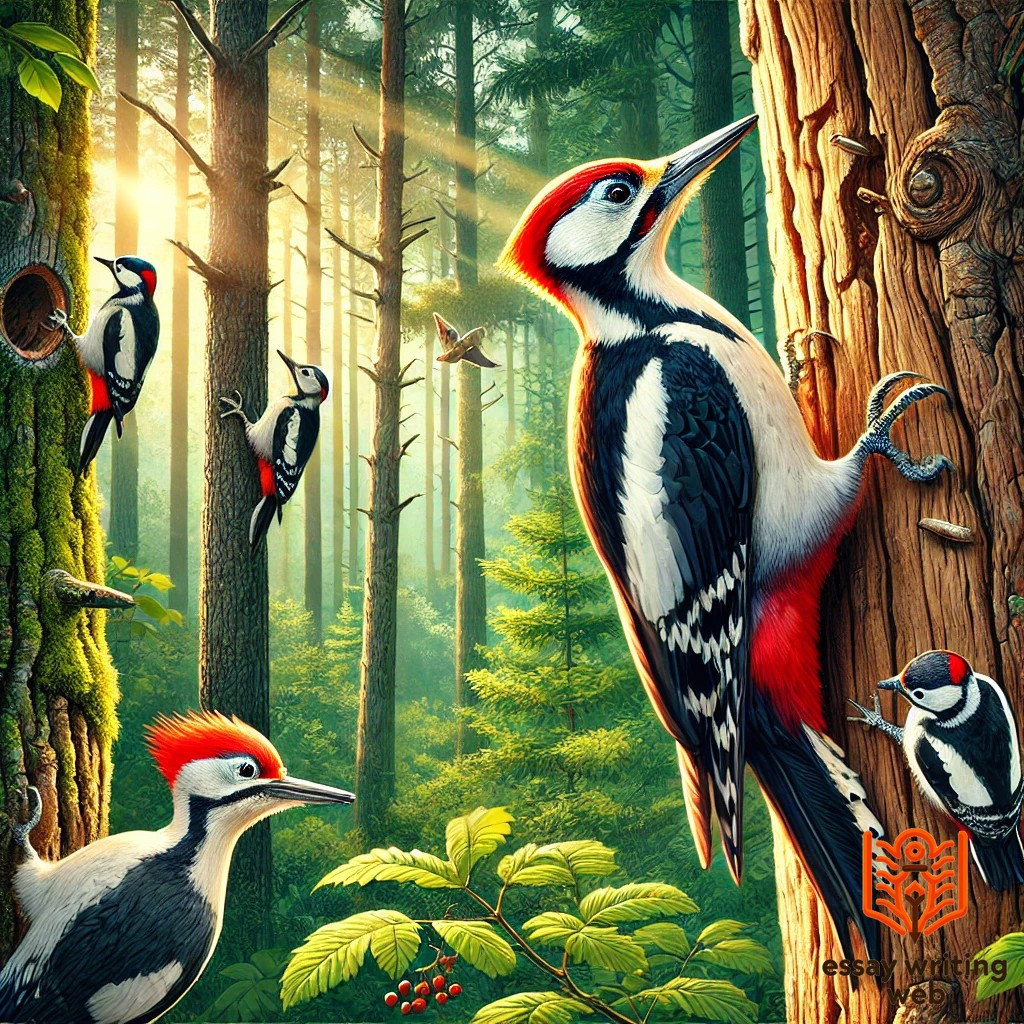
 16-09-2024
16-09-2024
 www.essaywritingweb.com
www.essaywritingweb.com
Woodpeckers are fascinating birds known for their distinctive habit of pecking into tree trunks and other hard surfaces. These birds belong to the Picidae family and are found all around the world, with more than 200 species distributed across various regions. The sound of woodpeckers drumming on trees is a common feature of forest environments, and this behavior plays an essential role in their survival, helping them communicate, find food, and build nests.
The woodpecker's unique physical adaptations are what make them so well-suited to this lifestyle. Their strong beaks, stiff tails, and zygodactyl feet (two toes facing forward and two backward) allow them to cling to vertical surfaces and hammer away at tree bark with impressive force. Despite the rapid and forceful pecking, woodpeckers are designed to withstand the impact, thanks to special shock-absorbing structures in their skulls. Their long, sticky tongues also help them reach deep into tree crevices to extract insects, their primary source of food.
Beyond their remarkable behavior and physical traits, woodpeckers play an important ecological role in the environments they inhabit. As natural insect controllers, they help maintain forest health by consuming large quantities of wood-boring insects, which can otherwise damage trees. Their habit of excavating holes in tree trunks also provides nesting sites for many other species, including small mammals and other birds.
Woodpeckers, therefore, are more than just an interesting avian species—they are critical contributors to forest ecosystems. Their presence enhances biodiversity, and they serve as indicators of a healthy environment. As human activities such as deforestation threaten their habitats, understanding and conserving woodpecker populations becomes increasingly important for maintaining ecological balance.
Woodpeckers are easily recognized by their distinctive physical features, which are perfectly suited to their unique way of life. One of the most notable traits is their strong, chisel-like beak, which they use to peck into wood to search for insects or to create nesting cavities. Their beaks are built to withstand repeated impact, with a tough, resilient structure that helps them drill into trees without injury.
Another key characteristic of woodpeckers is their zygodactyl feet, meaning they have two toes pointing forward and two pointing backward. This arrangement allows them to grip vertical surfaces, like tree trunks, with great stability. Combined with their stiff tail feathers, which act as a support, woodpeckers are able to brace themselves as they peck.
Woodpeckers also have specialized tongues that are long and often barbed or sticky, allowing them to extract insects from deep within the wood. Their tongues can extend far beyond their beaks, giving them an advantage when foraging for food. Additionally, woodpeckers have a unique skull structure with built-in shock absorption, which protects their brain from the repeated impacts caused by pecking. These specialized traits make woodpeckers highly adapted to their environment, enabling them to thrive in forests and woodlands.
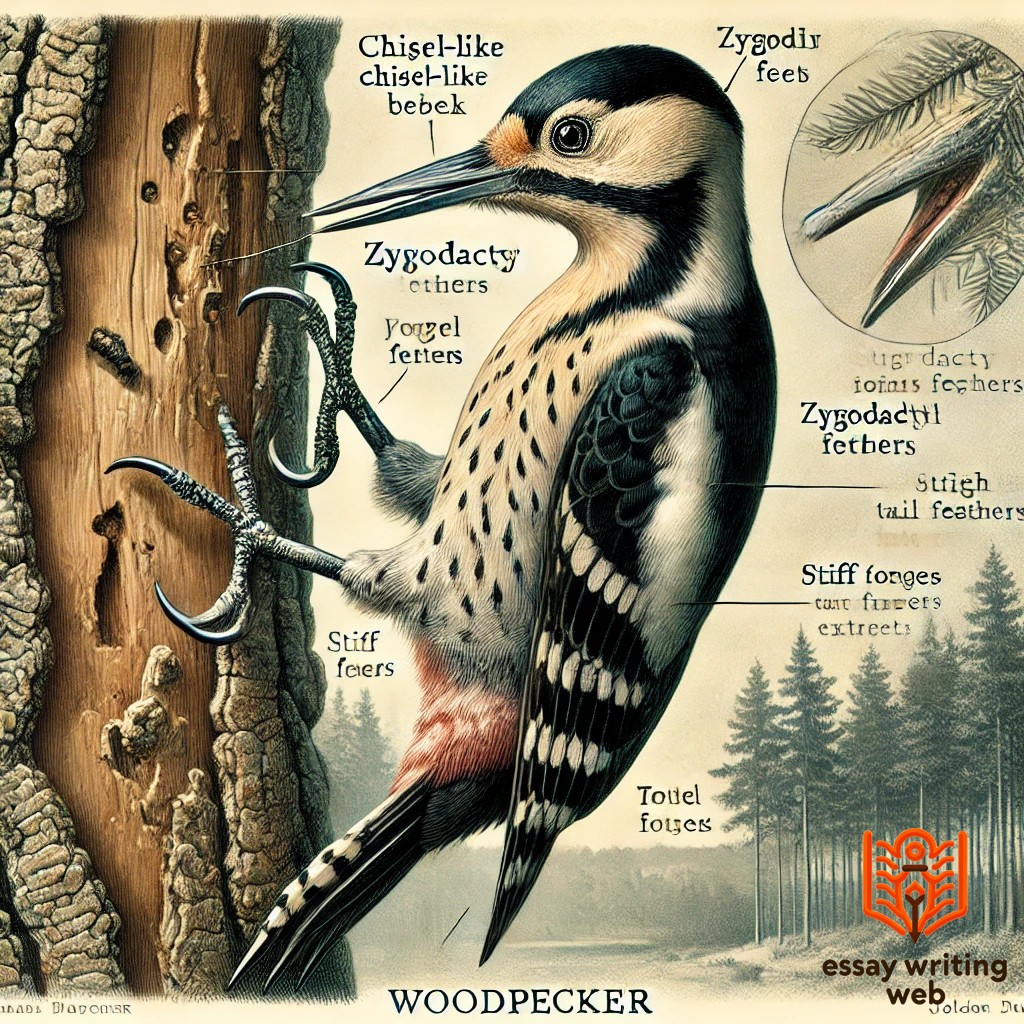
Woodpeckers are highly adaptable birds found in a variety of habitats around the world, though they are most commonly associated with forests and woodlands. These birds thrive in areas where trees are abundant, as their primary activities, such as feeding and nesting, revolve around trees. Deciduous forests, coniferous forests, and mixed woodlands are all common habitats for woodpeckers, providing them with the necessary resources like food, shelter, and nesting sites.
Different species of woodpeckers may prefer different types of forests depending on their dietary needs and nesting habits. For instance, some species prefer dense forests with old, large trees that offer ample opportunities for foraging insects beneath the bark. Others are more adaptable and can be found in suburban areas, parks, orchards, and even grasslands with scattered trees. They can also be spotted near dead or decaying trees, as these offer ideal spots for excavation.
Despite their adaptability, woodpeckers are vulnerable to habitat loss caused by deforestation and urbanization. As more forests are cleared, these birds lose critical nesting and feeding grounds, leading to a decline in some species. Protecting their natural habitats is essential to maintaining healthy woodpecker populations and the ecosystems they support.

Woodpeckers have a diverse diet that primarily consists of insects, making them valuable in controlling pest populations in forests. They are insectivores by nature, with their specialized feeding habits revolving around their ability to drill into tree bark in search of larvae, ants, and beetles. Using their strong, chisel-like beaks, woodpeckers can access wood-boring insects hidden deep beneath the bark. Their long, barbed tongues, often coated in sticky saliva, help them extract these insects with precision.
In addition to insects, woodpeckers consume a variety of other food sources. Some species feed on tree sap, particularly during spring when it is flowing abundantly. They use their beaks to tap into the bark and drink the sap that flows from the holes they create. Woodpeckers also eat fruits, nuts, and seeds, especially during colder months when insects are scarce.
Certain species of woodpeckers, like the Acorn Woodpecker, are known to store food for later consumption. They create storage holes in trees, known as granaries, where they stockpile acorns and other food items. This behavior allows them to survive during harsh winters, showcasing their remarkable adaptability and foraging strategies across different environments.
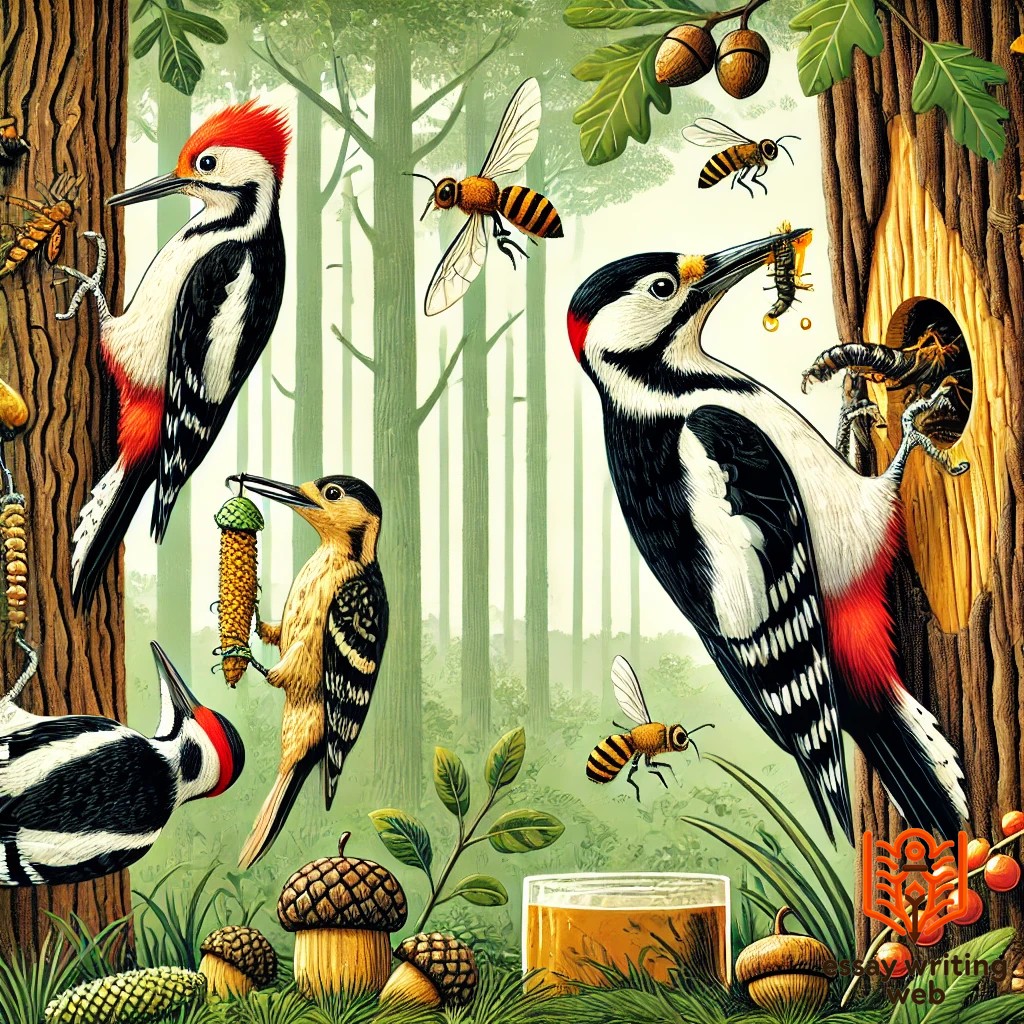
Woodpeckers are best known for their pecking behavior, a unique trait that serves multiple purposes in their daily lives. Pecking, or "drumming," is used by woodpeckers for foraging, communication, and nest-building. When searching for food, woodpeckers drill into tree bark to reach insects, larvae, and other invertebrates hiding inside the wood. Their strong, chisel-like beaks and specialized skull structures enable them to withstand the repeated impacts without injury.
Besides foraging, woodpeckers use pecking as a means of communication. The rhythmic sound produced by drumming on trees or other hard surfaces is often used to mark territory and attract mates. Each species of woodpecker has its own distinctive drumming pattern, which helps them identify one another. This behavior is especially prominent during the breeding season when woodpeckers become more vocal and territorial.
Pecking also plays a critical role in nest-building. Woodpeckers excavate holes in tree trunks to create safe nesting sites where they can lay their eggs and raise their young. These cavities are not only essential for woodpeckers but also for other animals that use abandoned woodpecker nests as shelters.
Overall, woodpeckers' pecking behavior is a remarkable adaptation that supports their survival and ecological role.
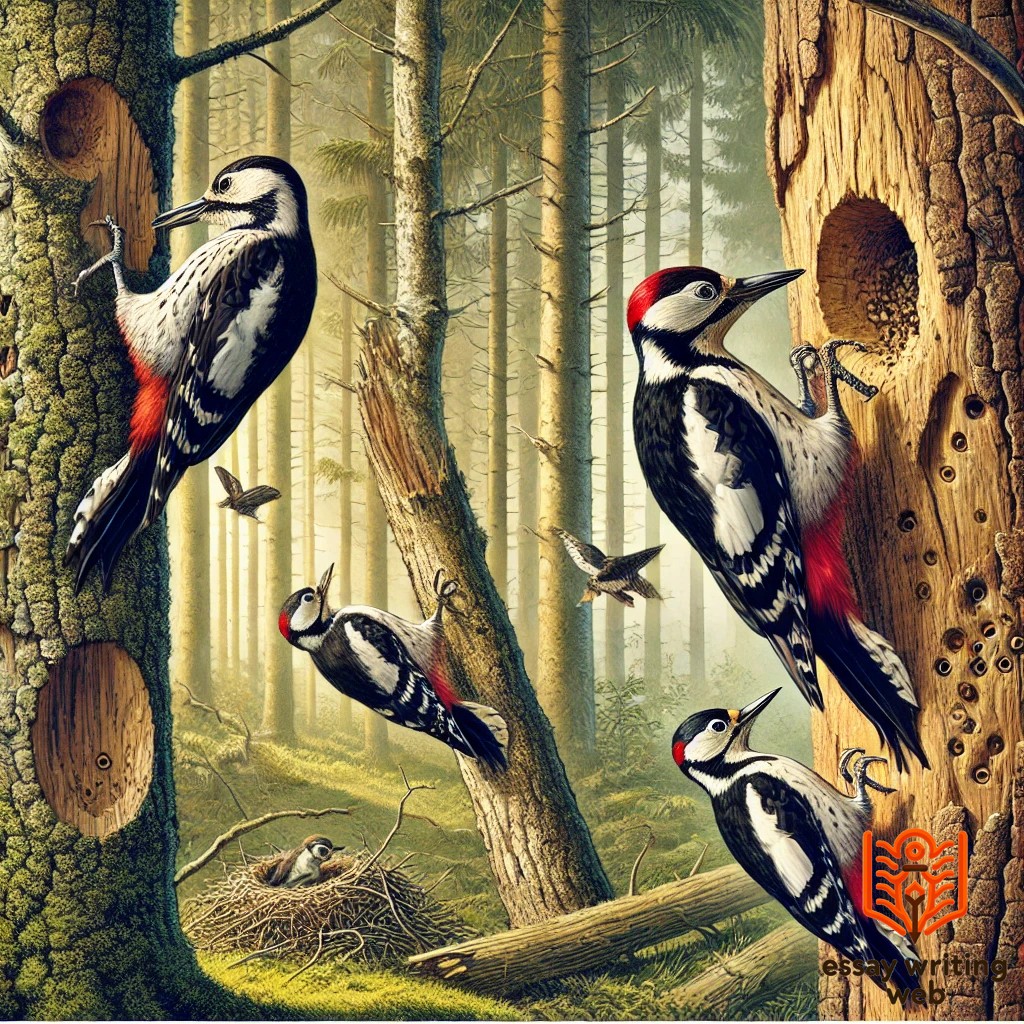
Woodpeckers have a unique and fascinating approach to nesting and reproduction, playing an important role in forest ecosystems. These birds are known for their ability to excavate nesting cavities in tree trunks, which serve as safe havens for their eggs and young. Using their strong beaks, woodpeckers create holes in both living and dead trees, where they establish their nests. These cavities are well-protected from predators and harsh weather, providing an ideal environment for raising their offspring.
Woodpecker nests are typically located in the middle to upper portions of tree trunks, where they dig deep holes. The depth of these nests can range from a few inches to over a foot, depending on the species. After creating the cavity, woodpeckers line the nest with wood chips to create a soft bedding for their eggs.
During the breeding season, which usually occurs in spring, woodpeckers engage in courtship displays that often involve drumming, vocalizations, and aerial displays to attract mates. After mating, the female lays a clutch of eggs, usually between 3 to 5 eggs, which both parents incubate. The incubation period lasts around two weeks, after which the eggs hatch.
Both parents are actively involved in feeding and caring for the chicks. They bring insects and other small food items to the nest to nourish the young birds. The fledglings leave the nest after a few weeks, but they may continue to rely on their parents for food and guidance for a short time after leaving. This intricate reproductive process ensures the survival and continuation of woodpecker populations.
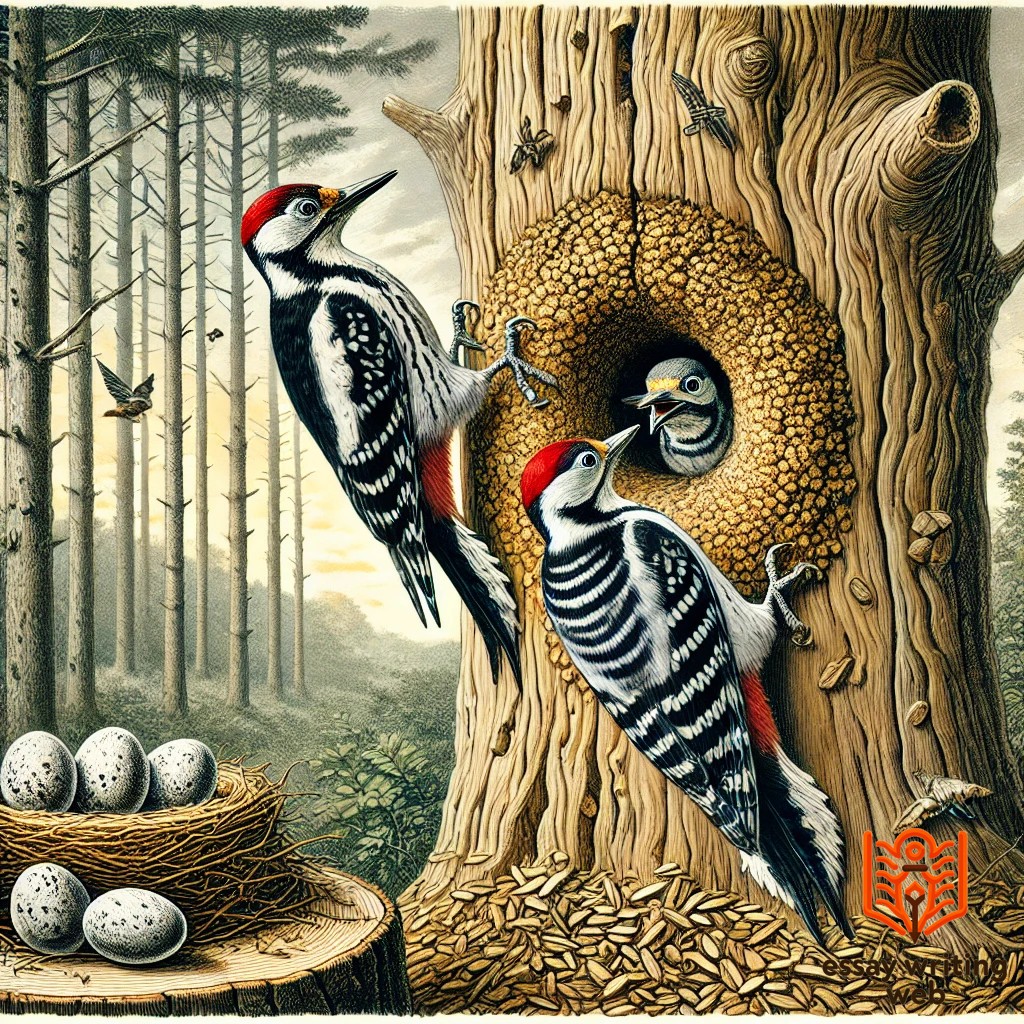
Woodpeckers play a vital role in maintaining the health and balance of ecosystems, particularly in forested environments. As natural pest controllers, woodpeckers help manage insect populations, especially wood-boring insects that can cause significant damage to trees. By foraging for insects beneath tree bark, they prevent infestations that could weaken or kill trees, contributing to the overall health of the forest.
Another critical contribution woodpeckers make to ecosystems is their role as cavity nesters. The holes they excavate in trees for nesting not only provide shelter for themselves but also serve as homes for a variety of other species. Once woodpeckers abandon these cavities, they are often used by other birds, such as owls, bluebirds, and even small mammals like squirrels and bats. This process enhances biodiversity and provides critical nesting sites in habitats where natural cavities might be scarce.
Woodpeckers also contribute to the decay process in forests by creating openings in trees that promote decomposition. This helps recycle nutrients back into the soil, fostering the growth of new vegetation. Through their feeding, nesting, and foraging behaviors, woodpeckers are essential to maintaining the balance of forest ecosystems and supporting a diverse range of species.
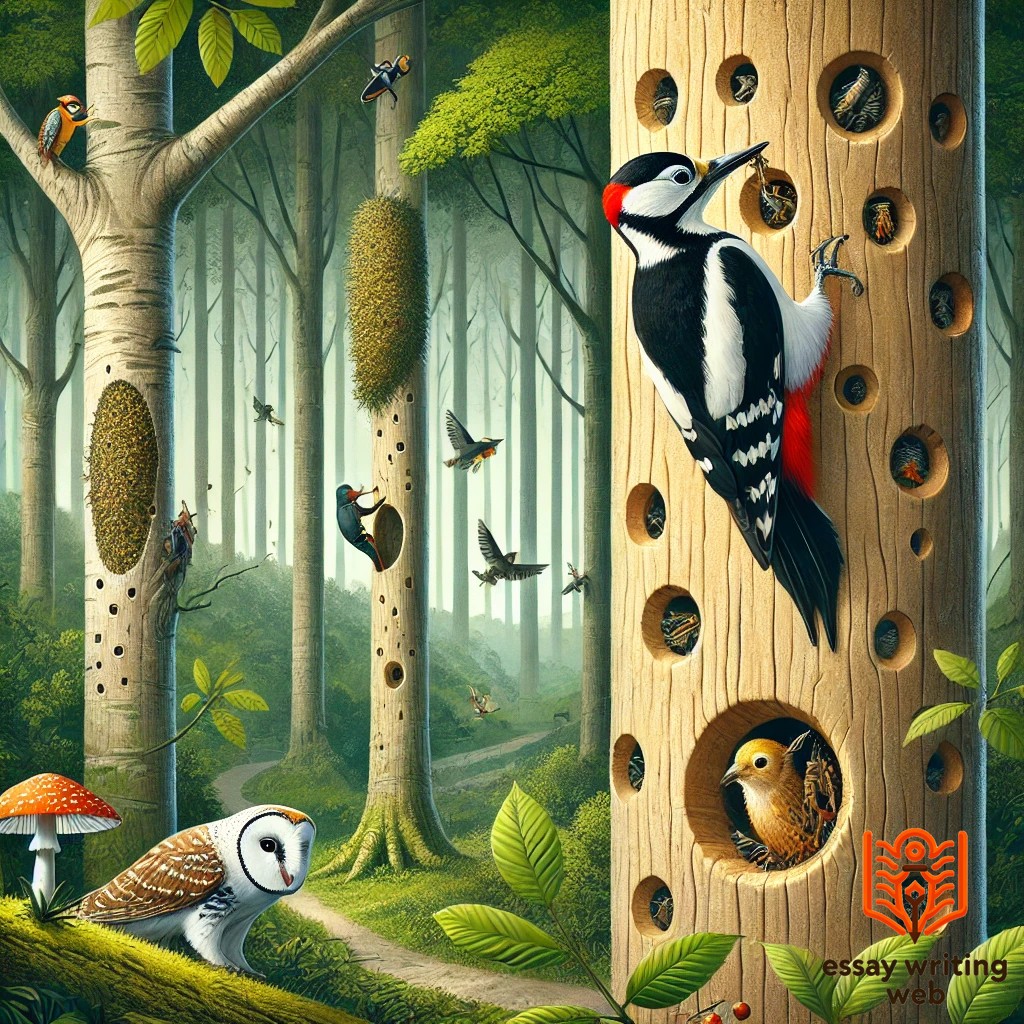
Woodpeckers face several threats that endanger their populations and habitats. One of the most significant challenges is habitat loss due to deforestation and urbanization. As forests are cleared for agriculture, logging, or development, woodpeckers lose the trees they depend on for nesting, feeding, and shelter. This habitat destruction is especially critical for species that require old-growth forests or specific tree types for nesting.
In addition to habitat loss, climate change is affecting woodpecker populations. Changes in temperature and precipitation patterns can disrupt their food supply, particularly the availability of insects and tree sap. Severe weather events, such as storms and wildfires, can also destroy their habitats.
Conservation efforts are essential to protect woodpeckers and the ecosystems they inhabit. Preserving forests and promoting reforestation are vital strategies for maintaining their habitats. Protecting old-growth forests, where many woodpeckers prefer to nest, is especially important. In some areas, artificial nesting boxes are used to help woodpeckers find safe nesting sites when natural cavities are scarce.
Laws and regulations that protect wildlife and forests, along with education and awareness campaigns, can also contribute to woodpecker conservation. By preserving their natural habitats and addressing threats, we can ensure the survival of these remarkable birds and the ecosystems they support.
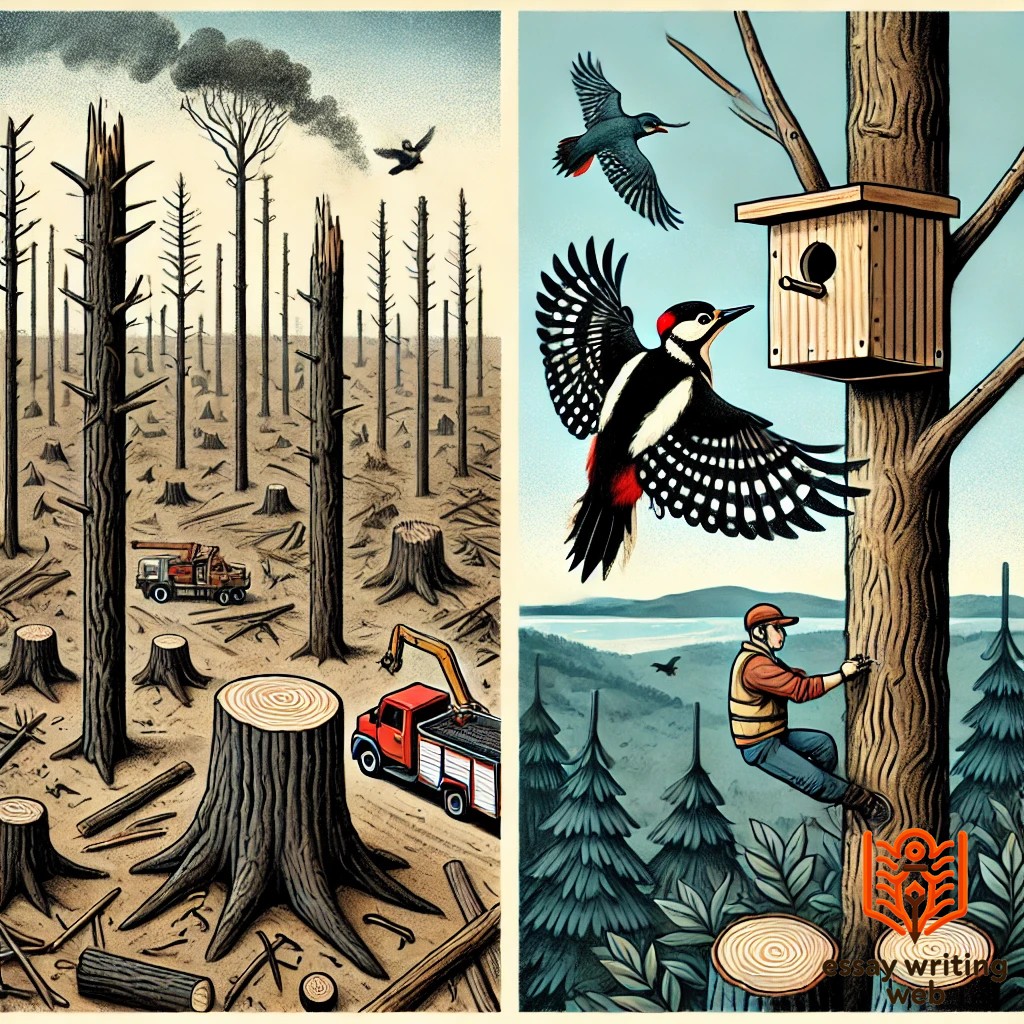
Woodpeckers are found in various parts of the world, and several species are particularly well-known for their distinct behaviors, habitats, and appearances. Each species has unique characteristics that make them stand out, contributing to the diversity of woodpeckers across the globe.
One of the most famous species is the Pileated Woodpecker (Dryocopus pileatus), native to North America. This large woodpecker is easily recognized by its striking red crest and black body. The Pileated Woodpecker is known for creating large rectangular holes in trees as it searches for insects, especially carpenter ants. These birds play a crucial role in forest ecosystems by excavating cavities that other animals use for nesting.
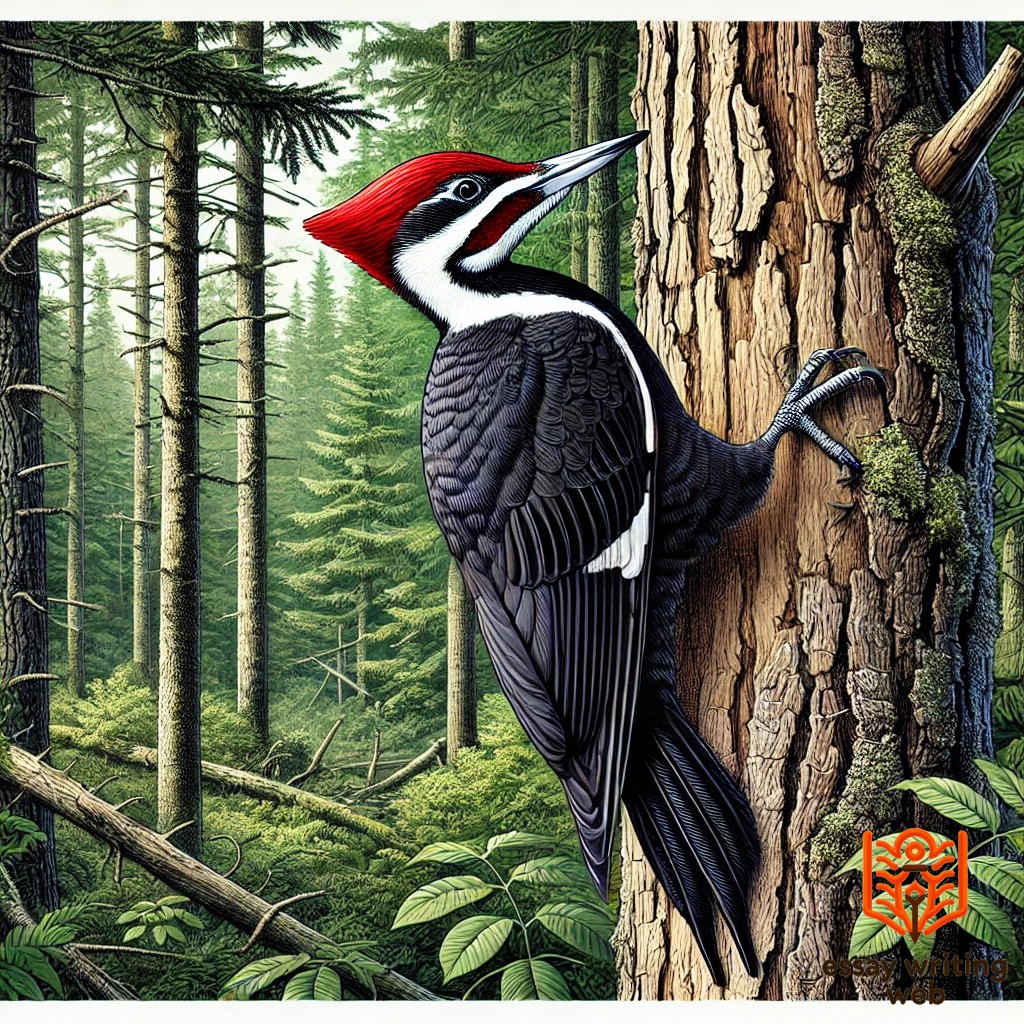
Another well-known species is the Great Spotted Woodpecker (Dendrocopos major), found throughout Europe and Asia. This medium-sized woodpecker is identified by its black and white plumage, along with a distinctive red patch under its tail. The Great Spotted Woodpecker feeds on insects, nuts, and seeds, and is often seen drumming loudly on trees to establish territory or attract mates.
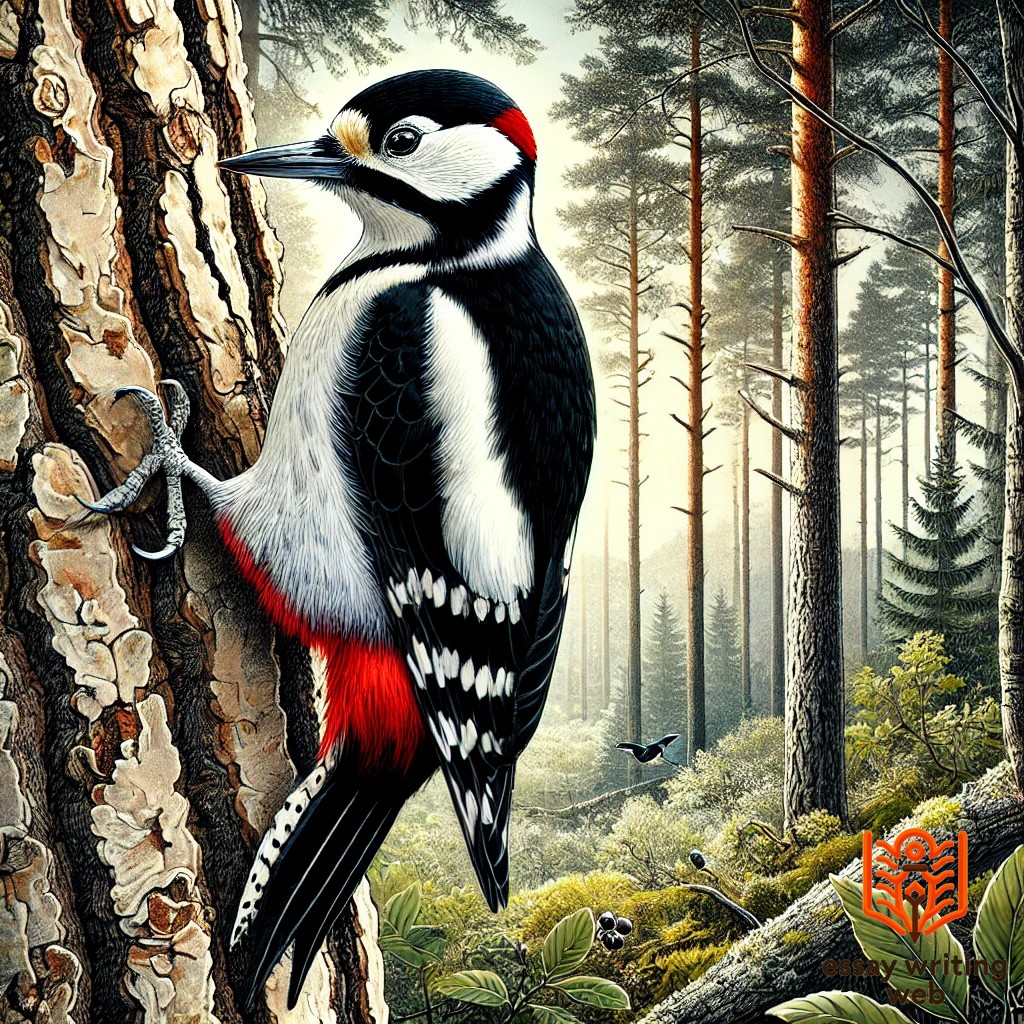
The Acorn Woodpecker (Melanerpes formicivorus) is famous for its unique behavior of hoarding acorns in “granaries,” which are large storage sites created by drilling holes in trees or wooden structures. Native to the western United States, Mexico, and Central America, the Acorn Woodpecker is a social bird that lives in family groups and shares these food resources during lean months.

Lastly, the Ivory-billed Woodpecker (Campephilus principalis) was once one of the largest woodpecker species in North America, known for its striking appearance with a white bill and black-and-white wings. Though thought to be extinct due to habitat loss, there have been unconfirmed sightings, making this bird a symbol of conservation efforts to protect endangered species.
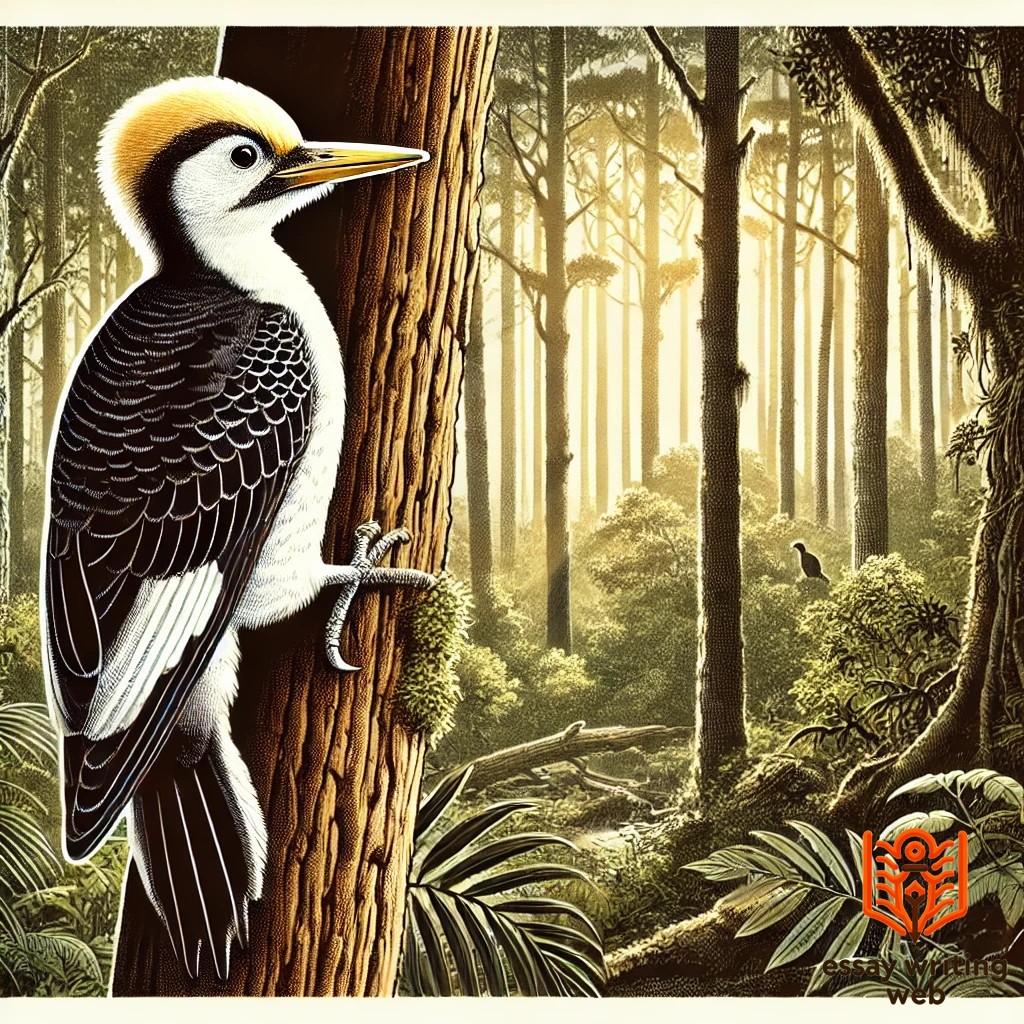
Each of these famous woodpecker species highlights the adaptability and ecological importance of woodpeckers in various environments.